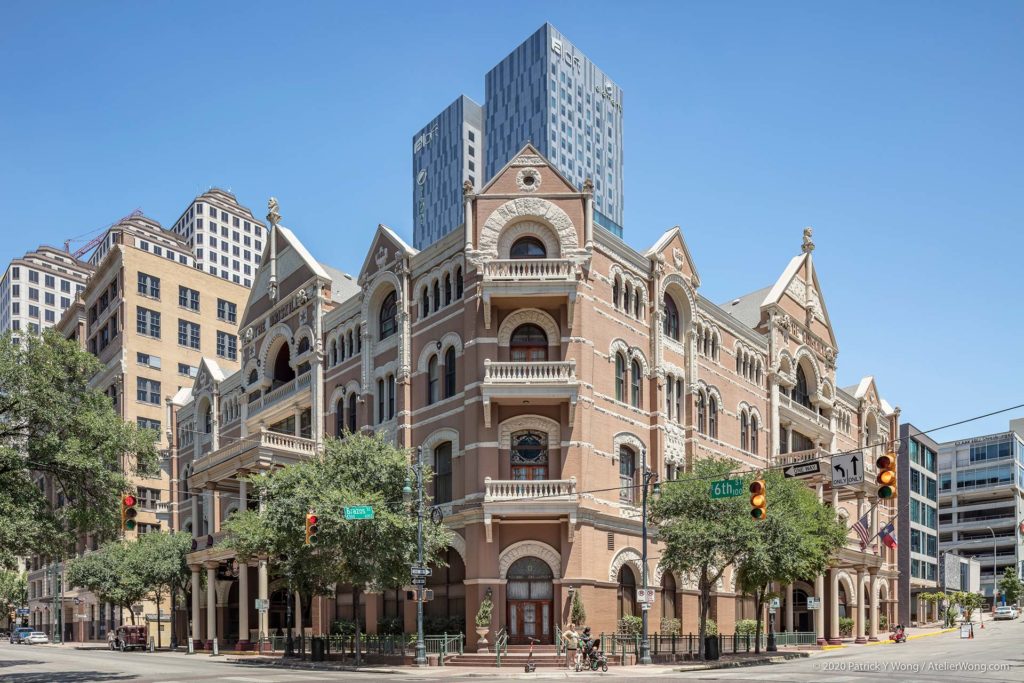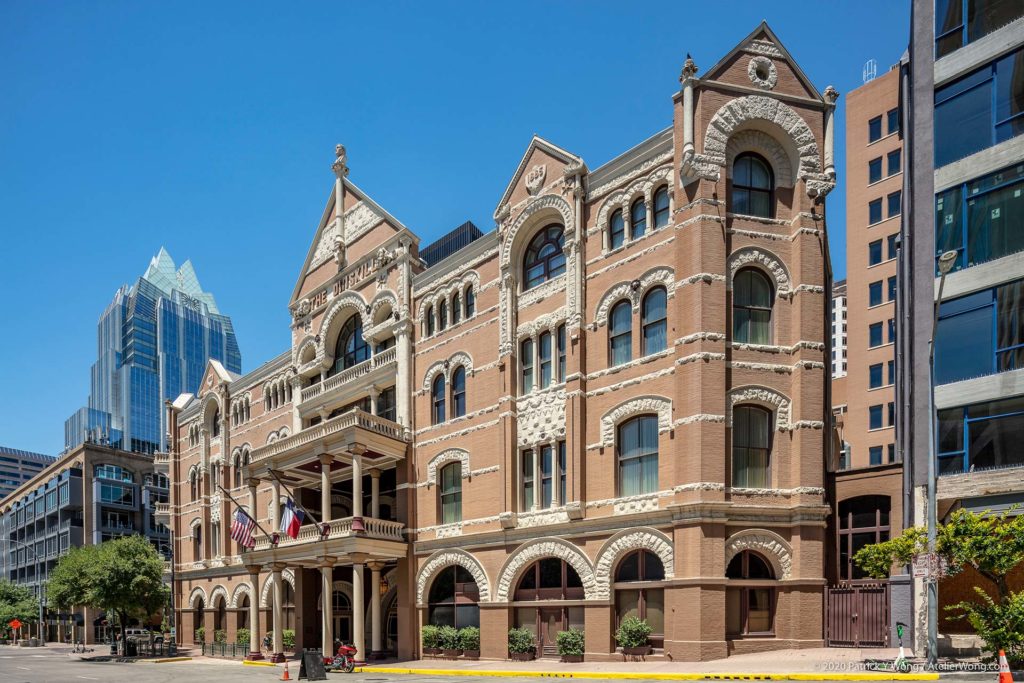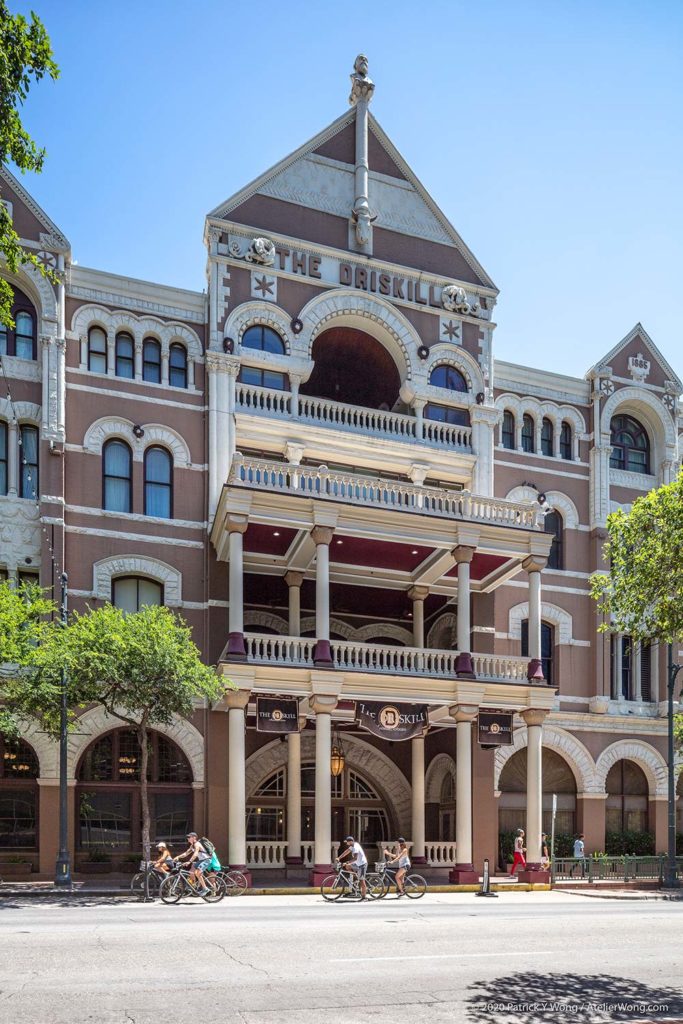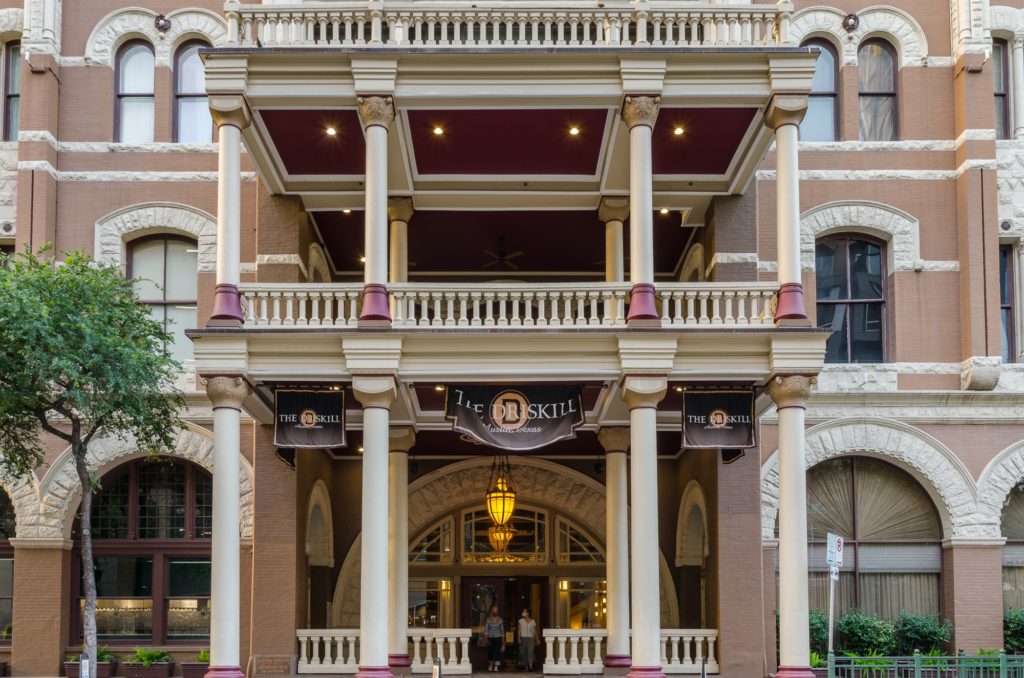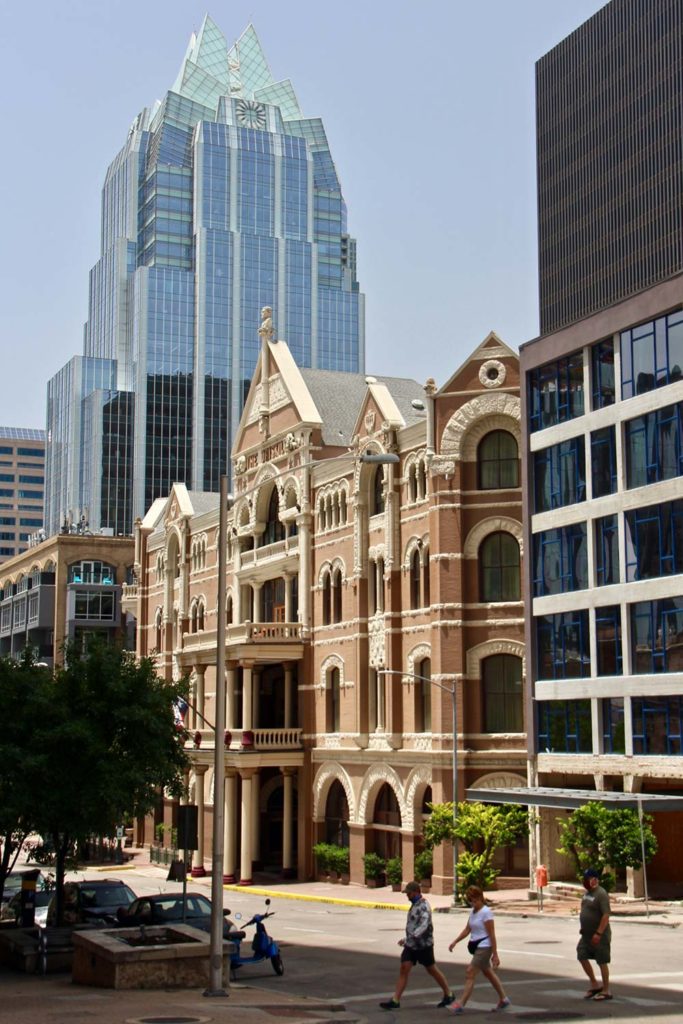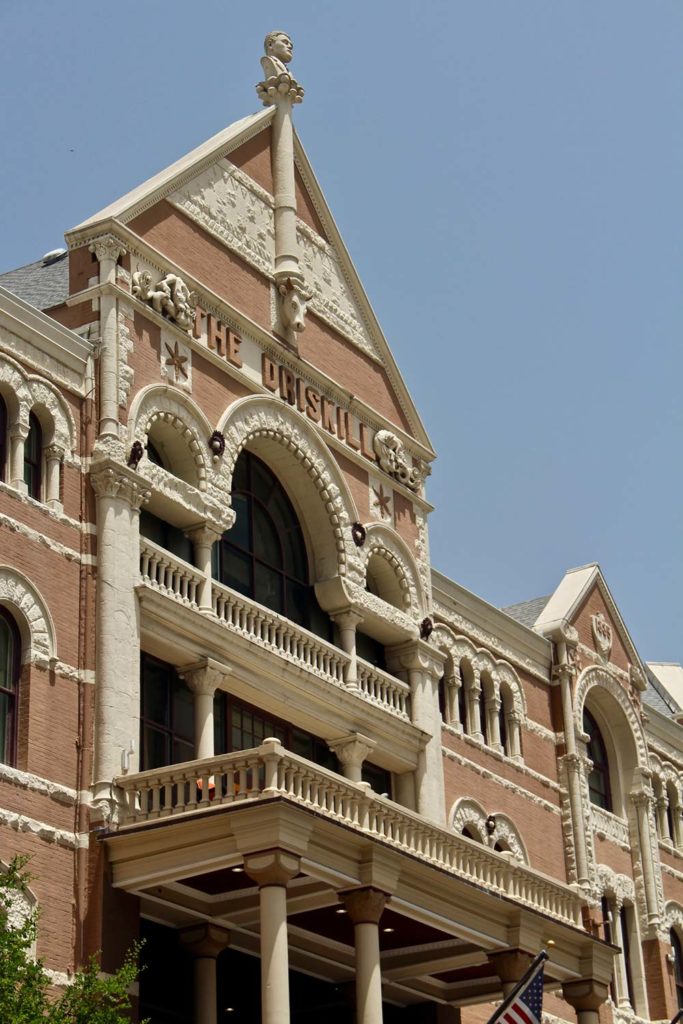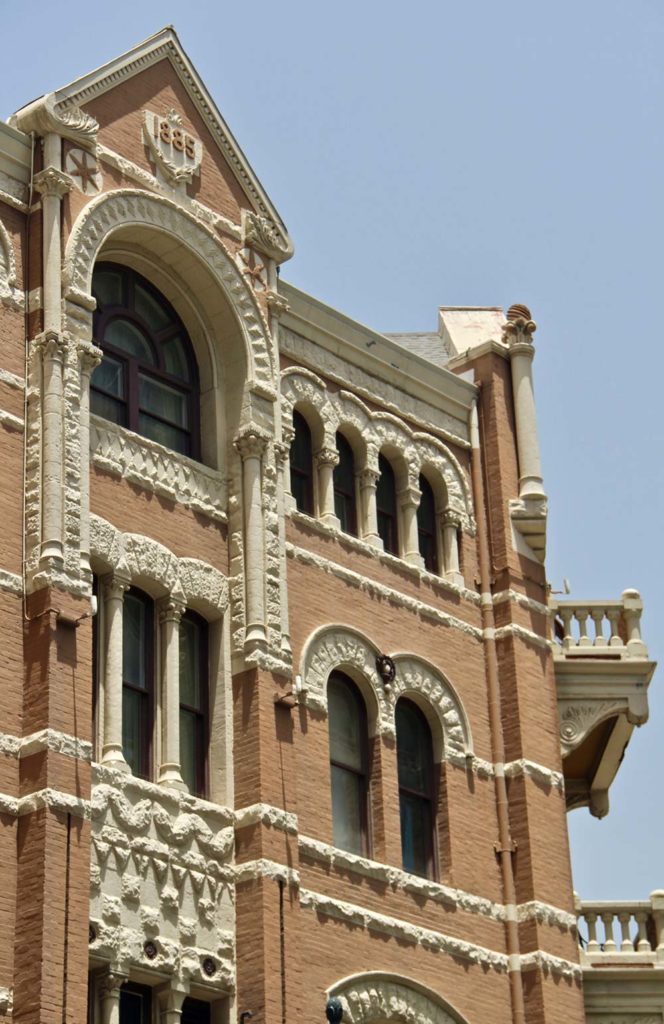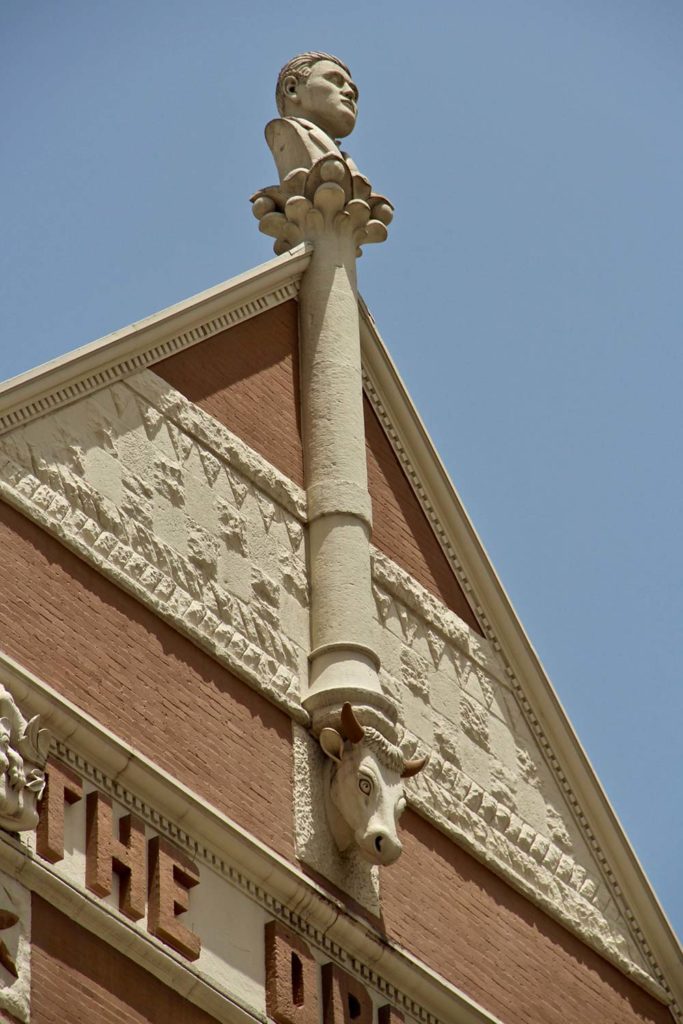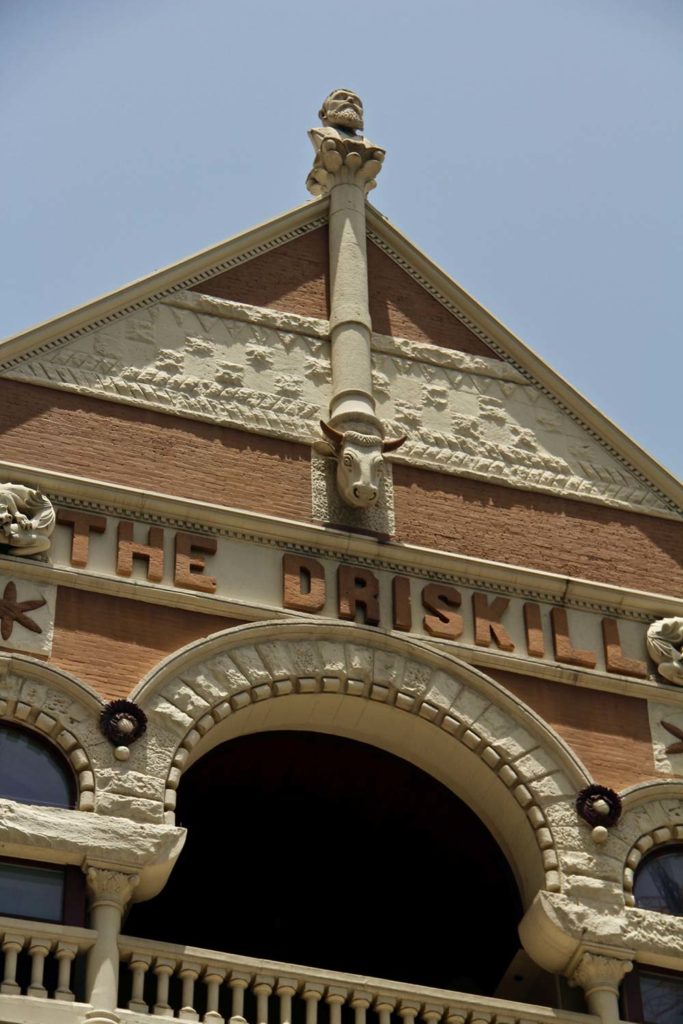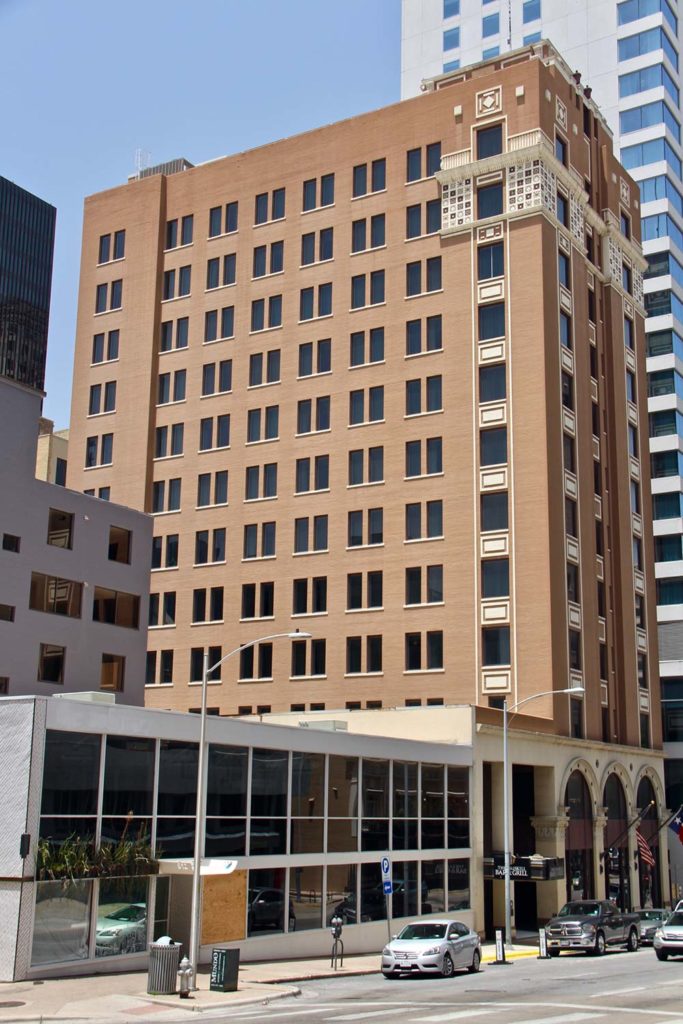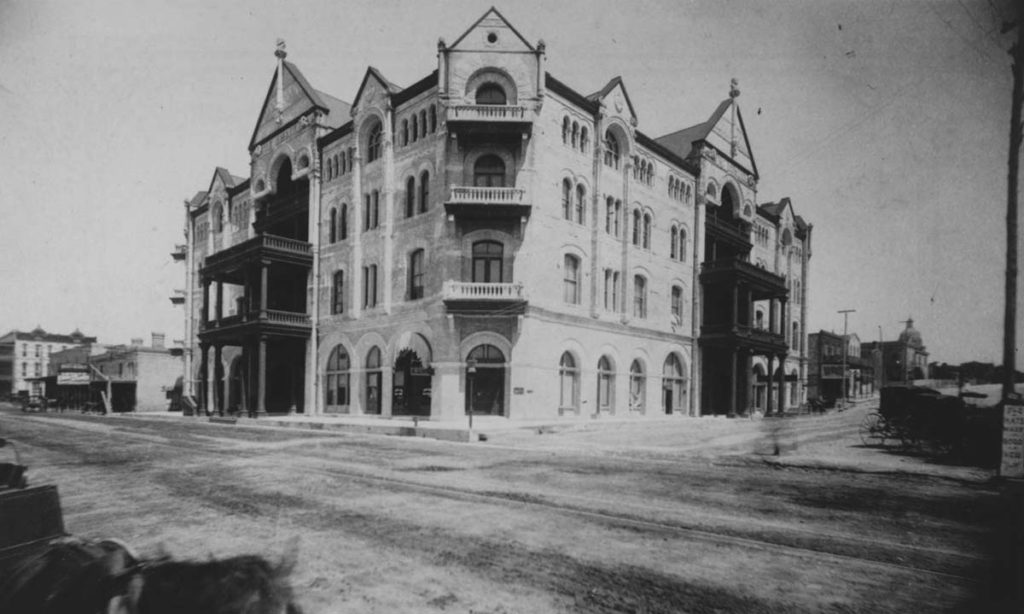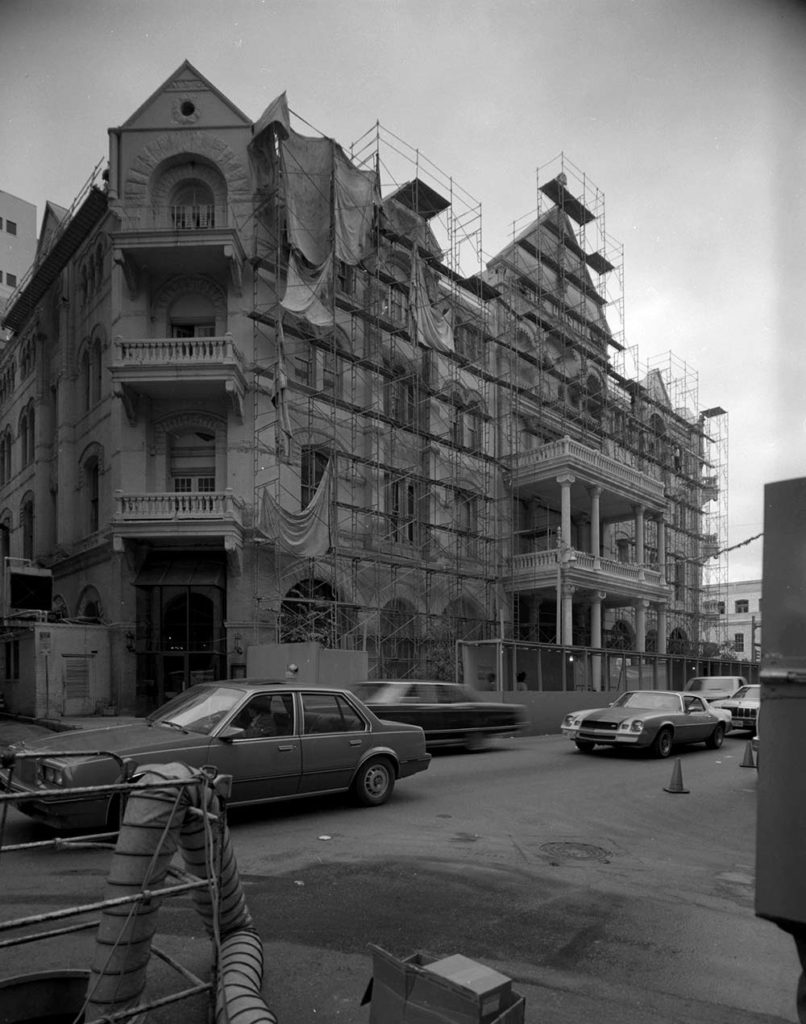Conceived by Colonel Jesse Lincoln Driskill, a wealthy cattle baron, The Driskill arrived on the scene as part of Austin’s late 19th-century construction boom that included the Texas State Capitol and The University of Texas. Upon its construction, the hotel became a fixture of social and political life—a legacy that continues to this day.
The style of the hotel is Romanesque Revival with a western spin. Austin architect Jasper Preston was inspired by the work of H.H. Richardson, whose designs are characterized by strong massing, rough-hewn stone, recessed entrances, and round arches that become smaller as the building rises. A closer look reveals distinctly Texan elements, such as the longhorn that adorns the triangular gables on the east, south, and west façades, which are in turn capped by busts of Driskill and his two sons.
Step inside and you’re swept away into a world of polished stone, stained glass, and gilded columns. The floor plan is composed of two axes that intersect at the foot of a grand staircase presided over by a portrait of the Colonel. The paintings to both sides depict some of the many inaugural balls, university homecomings, and lavish banquets that have taken place here. For decades, this has been a place for lawmakers, lobbyists, and social climbers to rub elbows beneath sparkling chandeliers or belly up to the copper-ceilinged bar. Spot the old vault door opposite the staircase; this seemingly incongruous feature dates to 1980, when George Littlefield, who briefly owned The Driskill and built the eponymous nine-story building next-door, opened a bank here.
If you feel a chill run down your spine, then you may be in the presence of one of The Driskill’s long-term residents. The Colonel himself, an avid cigar smoker, is said to haunt these halls, leaving behind telltale wafts of cigar smoke. Likewise, the spirit of Samantha Houston, a young girl who tragically fell to her death on the grand staircase in 1887, has been heard laughing in empty rooms. Her portrait hangs on the fifth floor.
Over the years, this storied structure has changed hands countless times and undergone numerous renovations, for better or worse. A heavy-handed 1950s remodel saw the removal of a central rotunda topped by a stained-glass dome to make way for air-conditioning equipment on the roof. Threatened with demolition in 1969, the structure was saved by the Heritage Society of Austin and listed on the National Register of Historic Places. Grassroots preservation efforts culminated in a 1999 restoration that resurrected many of the hotel’s signature features. – Bud Franck
